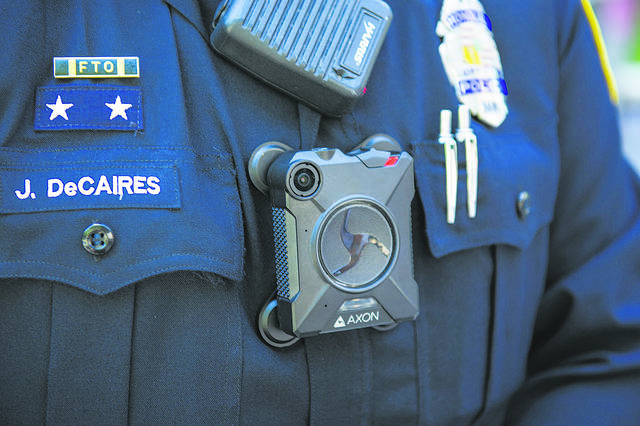KAILUA-KONA — For at least five years, the Hawaii Police Department has been looking at ways to fund a body-worn camera program for its officers. However, with a “status-quo” budget, the department keeps coming up short.
Since Honolulu Police Department issued its first set of body-worn cameras to 35 officers earlier this month, Hawaii County is now the only police department in the state not to have a BWC program.
“I have stated publicly that BWCs are a priority for the department, however, it is very dependent on funding, not just the initial start-up costs, but to sustain any BWC program in the years going forward,” Hawaii County Police Chief Paul Ferreira stated in an email Monday.
According to an Associated Press article on Aug. 14, Honolulu Police Department plans to roll out dozens of BWCs every month to eventually equip all 1,200 officers with body cameras. Officials expect hundreds of officers to have cameras by the end of next year.
Kauai police started its BWC program in 2014. Maui police started providing body cameras to its officers in 2017. According to a July 22, 2017, Maui News article, the department received 125 body cameras.
Hawaii Police Maj. Samuel Thomas said Hawaii County was the first to test BWCs in the state in 2013. While the cameras are affordable, the program, storage of video from the cameras and redaction tools are costly.
“It’s a very expensive venture,” Thomas said.
During that time when the program was being tested, the county’s budget began to shrink and all departments were required to submit “status-quo” budgets — essentially budgets without any new additions.
“For a while there it looked like the state was going to provide funding but that didn’t come to fruition,” Thomas said.
This has not stopped the department from thinking outside the box. Thomas said police have applied for at least four grants since 2013 in hopes of getting the BWC program funded. However, those grants were not awarded.
Ferreira added the department has done research into various other grants that are available for start-up funds to acquire BWC equipment and storage.
“However, the department would still need to provide partial funding as well as funding for additional personnel to maintain the program, which has not been available due to the economic situation in the County,” the chief added.
Last year, the major said the BWC program would cost the county $400,000 a year to run.
“But storage is more costly. Redaction is more costly,” Thomas said. “That’s not a realistic amount of money.”
On top of that, he said, the department would need to hire a minimum of three people just to run the program.
“We don’t have a bunch of extra people we can assign to that at this juncture,” Thomas said.
Aside from salaries and wages, Thomas said, the 2018-19 fiscal year budget was cut by 5 to 7 percent from last year’s budget. Any additional items, such as the BWC program was submitted as a supplemental budget request, however, funds were not available.
“I should note that ahead of the BWC request, our first and foremost priority for our budget needs has been for additional personnel for our patrol divisions, beginning with supervisory personnel,” Ferreira said.
In the department’s supplemental budget request it asks for funding of 300 cameras that would cover all its uniformed patrol officers, traffic enforcement units, and specialized unit officers.
“The cameras would be still another tool for the officers to aid in conducting criminal investigations and seeking criminal prosecutions,” Ferreira said.
“The recordings would be a source of evidence in criminal proceedings and/or used in administrative investigations to substantiate or refute allegations of misconduct.”



